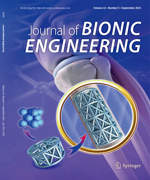This paper investigates the motion control of the heavy-duty Bionic Caterpillar-like Robot (BCR) for the maintenance of the China Fusion Engineering Test Reactor (CFETR). Initially, a comprehensive nonlinear mathematical model for the BCR system is formulated using a physics-based approach. The nonlinear components of the model are compensated through nonlinear feedback linearization. Subsequently, a fuzzy-based regulator is employed to enhance the receding horizon optimization process for achieving optimal results. A Deep Neural Network (DNN) is trained to address disturbances. Consequently, a novel hybrid controller incorporating Nonlinear Model Predictive Control (NMPC), the Fuzzy Regulator (FR), and Deep Neural Network Feedforward (DNNF), named NMPC-FRDNNF is developed. Finally, the efficacy of the control system is validated through simulations and experiments. The results indicate that the Root Mean Square Error (RMSE) of the controller with FR and DNNF decreases by 33.2 and 48.9%, respectively, compared to the controller without these enhancements. This research provides a theoretical foundation and practical insights for ensuring the future highly stable, safe, and efficient maintenance of blankets.

 Table of Content
Table of Content
 Table of Content
Table of Content